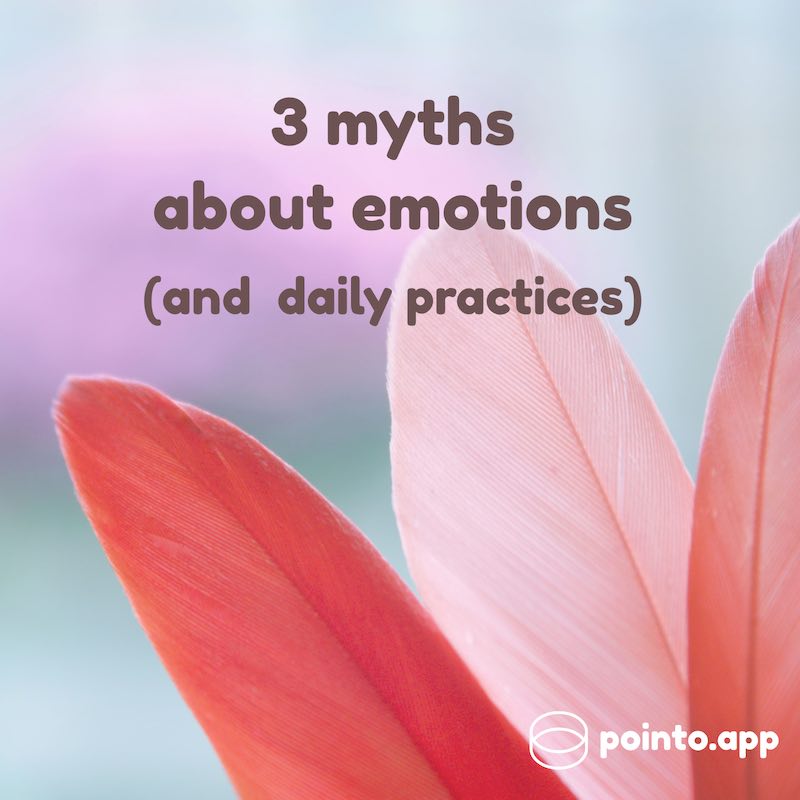Myth #1. Talking about your emotions is a weakness, or at best, useless: FALSE.
Verbalizing emotions is very beneficial for learning about them, and figuring out how to regulate them. By using words to “label” emotions, we make it easier to transfer the processing of our emotions from the “alert center” (the amygdala) to our prefrontal cortex. This part is responsible to making sense of things, and planning suitable actions. Verbalizing our feelings (and thoughts) is the first step towards making your emotions work for you, instead of against you.
Practice the Emotions Verbalization technique: When you feel an emotion, take a couple of minutes to speak out your about it in your voice journal. Try to describe both what the emotion is, and what it isn’t. This will help you to become better at identifying your emotions, and telling them apart. The more detailed the description, the better.
Myth #2. Negative emotions are bad for you: FALSE.
All emotions are “information” that our body and brain can use to react appropriately to different situations. Emotions – both positive and negative ones – become bad when people cannot effectively cope with them. For example, if someone’s anxiety about chatting with people discourages the person from going out, then perhaps that person cannot act effectively on their emotions.
Practice the Useful Information technique: Whenever you feel a strong unpleasant emotion, take a deep breath, sit somewhere for a couple of minutes and talk about it. Is this emotion telling you anything valuable about the situation? Does it spark ideas about actions you should take that would be useful for you (for example, to solve a problem, look for new information, change a habit etc.)?
Myth #3. My body tells me what emotions I’m feeling: FALSE.
Our bodies send a lot of signals to us – changes in temperature, heartbeat, sweating, breathing etc. However, these signals can be related either to emotions – such as anxiety or happiness – as well as to physiological changes that have nothing to do with emotions. For example, hunger, caffeine, sleep, and many other bodily reactions can look like emotions. That’s why it’s important to be able to tell apart our feelings and body signals.
Practice the Alternative Explanation technique: When you feel a strong change in your body (like your heart beating faster), try to investigate if it could be due to caffeine, hot weather or anything else. This exercise will help you to become more aware of what your body is telling you.
Remember: you can record as many times per day as needed. Try out at least one of the practices above for a week. At the end of the week, check back and self-reflect on your progress.


